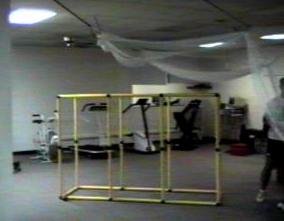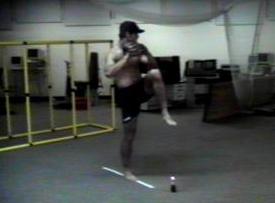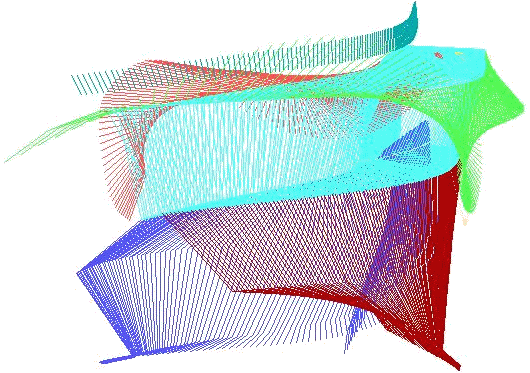
THE PITCHER’S SHOULDER
A CASE STUDY
Submitted by
Robert W. Wainwright, P.T., Director
Kinematic Consultants, Inc.
645 Ocean Road
Point Pleasant, New Jersey 08742
908 714-1907 FAX 908 714 1913




Graph #1 addresses the relative speeds of his right side joints, prior to and at ball release. Efficient ballistic sport events will follow a sequential delivery and forward passage of peak joint linear velocities from the ground up through the wrist and hand.
It is noted that this pitcher peaks his linear hip, shoulder, elbow and wrist velocities in proper sequence but there is a significant drop in peak velocities, approximately .4 seconds before ball release, at the elbow and wrist joints.
Graph II addresses the issue of total body momentum at ball release, linear and rotational. Each measure of momentum should reach its peak at ball release for maximum efficiency.
It is noted that the subject’s linear reaches peak approximately .3 seconds prior to ball release and his rotational momentum reaches peak at ball release. This indicates a pre-release linear braking motion of the body. This action will place higher stress on the anterior of the shoulder joint as it positions itself for energy transfer to the elbow, wrist and hand.
Graph III addresses the relative position of shoulders vs. hips.
It is noted that at ball release the subject’s shoulders are only 17 degrees forward of his hips at ball release. This indicates poor utilization of trunk rotational torque in the delivery of the pitch.
Graph IV address the relative position of the subject’s right shoulder vs. his center of gravity, at ball release. It is noted that the relative position of his right shoulder to center of gravity indicates his 21.5 inches forward of his c.g. at ball release.
|
Copyright © MCMXCVI by
Giedon Ariel & Associates
. All Rights Reserved.
Web Site Design by Gideon Ariel. Updated TUE 31 Dec 96 |
|